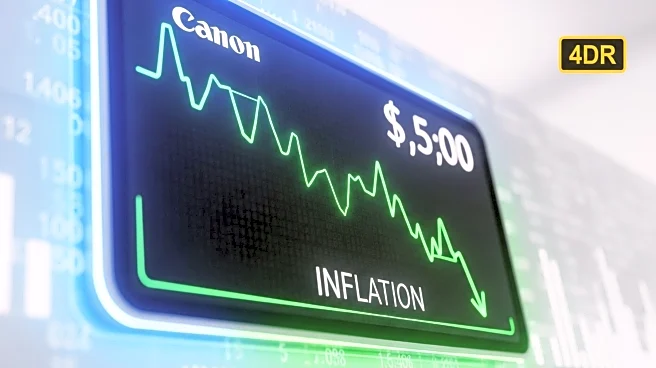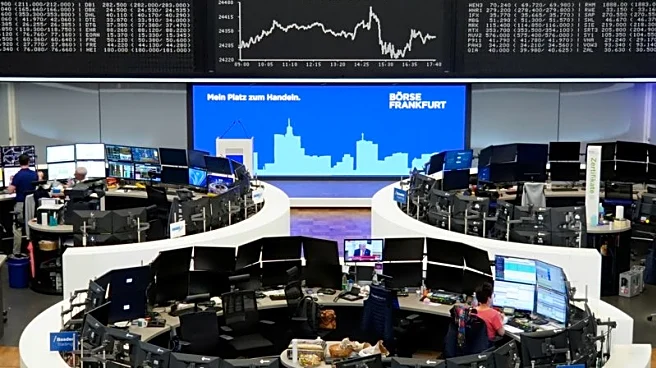What's Happening?
The US producer price index (PPI) experienced a 0.1 percent decline in August 2025, marking the first drop since April. This unexpected decrease was driven by a reduction in energy and trade service prices, according to data from the Department of Labor. Analysts had anticipated a 0.3 percent increase, making the decline notable. President Trump responded to the data by urging Federal Reserve Chair Jerome Powell to lower interest rates, labeling him a 'total disaster' for not acting swiftly. The PPI figures come as policymakers assess the impact of Trump's tariffs on pricing, with the Federal Reserve's next policy meeting on interest rates scheduled soon. Despite persistent inflation concerns, the relatively mild inflation and a weakening labor market have led traders to expect a 25 basis point rate cut by the central bank.
Why It's Important?
The decline in producer inflation is significant as it influences the Federal Reserve's monetary policy decisions. Lower inflation could ease the path for interest rate cuts, which President Trump has been advocating to stimulate economic growth. The tariffs imposed by Trump have added complexity to inflation dynamics, affecting trade service margins and potentially consumer prices. A rate cut could benefit businesses and consumers by reducing borrowing costs, but it also poses risks of overheating the economy if inflation rebounds. The balance between absorbing tariff costs and passing them to consumers will be crucial in the coming months, impacting various sectors and potentially altering consumer spending patterns.
What's Next?
The Federal Reserve is expected to consider the latest PPI data in its upcoming policy meeting, with a potential rate cut on the agenda. Analysts will closely monitor the consumer price index report due soon, which could provide further insights into inflation trends. Businesses will need to navigate the tariff impacts, balancing cost absorption with price adjustments. The ongoing pressure from President Trump on the Federal Reserve may influence its decision-making process, potentially leading to more aggressive monetary policy actions.
Beyond the Headlines
The broader implications of the PPI decline include potential shifts in trade dynamics and consumer behavior. The tariffs imposed by President Trump could lead to long-term changes in supply chains and pricing strategies. Additionally, the political pressure on the Federal Reserve raises questions about its independence and the role of government influence in monetary policy. The evolving economic landscape may also affect international trade relations and the US's position in global markets.













